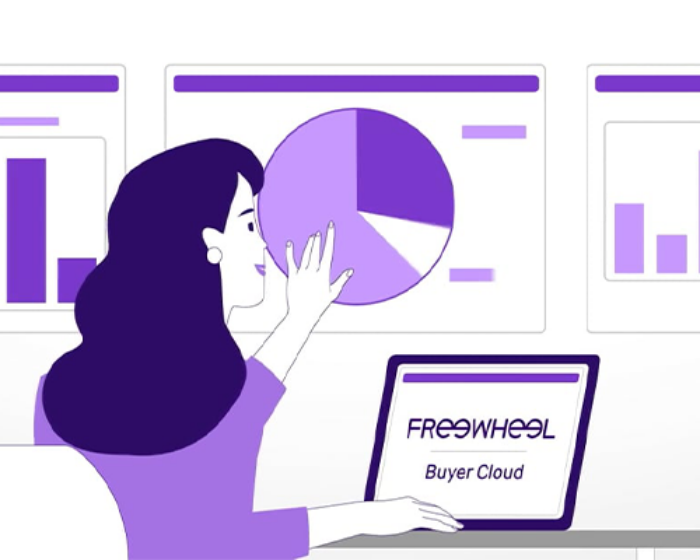Why the waste and safety issues plaguing digital media don’t have to be the future of CTV
When talking about programmatic advertising it is tempting to draw parallels with The Terminator series of movies. The rise of out-of-control machines opposing humanity is, of course, an obvious theme. But another is the fact that every time the heroes think they have the problem solved, something happens to return them back to where they started.
The theoretical advantages of programmatic advertising for a marketer are substantial. Lower transaction costs, more precise media targeting, greater flexibility, the ability to optimize creative and media in real time, and, of course, more competitive pricing should all lead to more efficient and more effective marketing. All of this is possible if marketers have greater insight and control when purchasing their media, especially in real time.
These advantages are characterized as theoretical because, well, they have not been entirely proven out. Several studies (see the ISBA’s study “Programmatic Supply Chain Transparency” and the ANA’s “Programmatic: Seeing Through the Financial Fog“) have estimated that approximately half of every dollar spent in programmatic display is going to the technology vendors that implement these campaigns — the so-called “tech tax.” And while the rate of this tax has likely come down for many marketers, it is still material. It is much harder to see gains in efficiency if the transaction costs are so high.
Even the effectiveness of programmatic advertising remains somewhat unproven and warrants further inquiry. A recent pilot study by Adalytics showed advertisers paying high CPMs for inappropriate placements, brands inadvertently targeting their own employees, brands bidding against themselves in the same ad auction, and examples of significant amounts of over-frequency. And internal data from FreeWheel indicates that a material percentage of winning bids don’t end up rendering an ad for a viewer.
And that’s before getting to the challenges posed by ad fraud and the inadvertent placement of advertising on sites that are, at best, not brand safe and, at worst, toxic contributors to culture.
Come with Me if You Want to Live (in a Better Ad World)
While many in the marketing and advertising industry tout the progress made on these issues, progress is relative. The internet reflects humanity — good and bad. And there is some really bad stuff out there. Should ads be supporting it? Even inadvertently? How much support for neo-Nazis is too much? Or COVID misinformation? Or election disinformation? And how sure are marketers that it is de minimis if some of the vendors they use to protect themselves are not doing what they say they are doing? The industry is going to automate, but how that automation is developed will have tremendous impact on preventing brands from supporting unsafe content and mitigating problems like over-frequency and self-bidding.
Harkening back to The Terminator reference, aren’t these supposed to be problems that have already been solved?
These issues are real, and the marketing and advertising industry should invest to more accurately dimensionalize them and then collaborate on solutions that treat all participants in the value chain fairly. The problems have spawned largely in the desktop banner ecosystem, where header bidding has become the most common executional model. But it doesn’t have to be that way, and with premium video there is an opportunity to be more thoughtful and not make the same mistakes again.
First Steps for Premium Video
In premium video there are fewer quality publishers and a few trusted partners through which marketers can buy inventory. This is why programmatic can be different in premium video and especially CTV — 70 percent of buyers responding to a recent survey by tvsquared said they buy CTV programmatically. The premium video marketplace reflects supply constraint, not demand. This different marketplace profile makes it more practical for marketers to work directly with publishers and their partners to ensure they purchase placements in high-quality, brand-safe environments, targeting the right audience but still maintaining much of the efficiency of automation and the effectiveness of data-driven decisions.
The obvious place to start is programmatic guaranteed advertising. This is the automated execution of a purchase of reserved ad inventory by a marketer. From a publisher’s perspective, this type of transaction allows them to better manage and forecast their inventory as the volume and price are committed to upfront by the buyer. (Double meaning sort of intended!) For example, with programmatic guaranteed deals executed with the publisher’s advertising technology partner, a publisher can ensure competitive separation.
From the marketer’s perspective, there are a number of benefits:
- A lower tech tax (fewer participants in the chain)
- Priority access to premium inventory
- Less risk of under-delivery against the target audience
- A better match rate, by working directly with the publisher
- Holistic management of campaign delivery across publishers by allowing marketers to log programmatic guaranteed delivery and optimize biddable execution in light of that delivery.
- Far more transparency on placement and context, and therefore less risk of marching in the parade of horribles described above.
This is not to suggest that this type of deal is a panacea. For starters, it isn’t a real-time transaction in which the marketer is evaluating the opportunity and controlling the ad decision, and so it doesn’t maximize a marketer’s flexibility. But given the obvious and substantial challenges that today’s real-time marketplace presents, programmatic guaranteed premium video transactions that work directly with a quality publisher and their partners should be one of the next steps taken in the industry’s evolution.
Going Forward
Ultimately, both buyers and sellers of premium video advertising need accurate visibility into the available pools of inventory and the audience they represent, across all of the distribution endpoints and all of the different flavors of premium video that are available today. Marketers, by working more closely with publishers and their partners, can help move the industry forward in a way that starts to solve some of its most difficult challenges and create more value for all participants in the ecosystem.
The basic concepts of how to proceed are already pretty clear. Buyers and sellers must come together to provide a means for both sides to holistically manage advertising, across all devices and endpoints (especially CTV), across all of the various deal types (i.e., programmatic guaranteed, real-time bidding open exchange, private marketplace, direct I/O) so that the value created is fairly apportioned between them, allowing sellers to optimize their inventory and buyers to optimize their campaign KPIs. This can be done with some effort, a willingness to collaborate, and the right technology. Remember, at some point in The Terminator series a good robot started working to help save humanity.
This article was originally published on ANA.net here.



